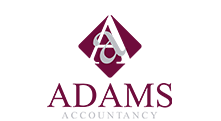Accounting for a lease

When your business buys an asset, such as a piece of machinery, the cost of the asset is added to the balance sheet. However, if you lease an asset rather than buy it, the treatment is different depending on the nature of the transaction. This blog looks at the different accounting treatment of operating leases and finance leases and discusses the proposed changes to Financial Reporting Standard 102 in the amendments published in FRED82.
What is a finance lease?
A finance lease is a lease agreement where the ownership of the asset is passed to the lessee at the end of the lease term. For example, a vehicle may be leased under a finance agreement to pay a deposit, followed by a set number of monthly payments (perhaps over 2-4 years) and a final payment, after which the asset is the property of the lessee.
Criteria for determining a finance lease
A lease should be classified as a finance lease when any of the following criteria are met:
- The lessee takes ownership of the asset by the end of the lease term.
- The lease term covers 75% or more of the remaining useful life of the asset
- The lessee has an option to purchase the leased asset at the end of the term and is reasonably certain to do so.
- The lessor has no alternative use for the asset at the end of the lease term because it is so specialised.
- The present value of all lease payments plus any lessee-guaranteed residual value is equal to or greater than the fair value of the underlying asset.
Accounting for a finance lease
When accounting for a finance lease, the following should be used to determine the asset value and liability:
Lease liability
The lease liability is calculated as the present value of the lease payments using the interest rate implicit in the lease. If this cannot be determined, the lessee’s incremental borrowing rate shall be used.
Right to use asset (ROUA) cost
The ROUA cost is equal to the initial amount of the lease liability, plus any lease payments made to the lessor before the lease commencement date, plus any initial direct costs incurred, minus any lease incentives received.
What is an operating lease?
An operating lease is an agreement to make a monthly payment to the lessor for the use of the asset, in effect hiring it for use over a specified period. Ownership is not transferred to the lessee.
Accounting for an operating lease
FRS 102 requires that lessees recognise payments under operating leases (excluding costs for services such as insurance and maintenance) as an expense over the lease term on a straight-line basis, unless:
- Another systematic basis is representative of the time pattern of the user’s benefit, even if the payments are not on that basis; or
- The payments to the lessor are structured to increase in line with expected general inflation (based on published indexes or statistics) to compensate for the lessor’s expected inflationary cost increases. However, if payments to the lessor vary because of factors other than general inflation, then this condition is not met.
Potential impact of Financial Reporting Exposure Draft 82 (FRED82)
FRED82 which is expected to be implemented on 1 January 2025 brings most assets on balance sheet irrespective of ultimate ownership and risk/reward. Short-term (less than 12 months) and low value leases would be excluded and can be expensed to the P&L (e.g., mobile phones, tablets, home computers & printers and small items of furniture). For all other leases, the lessee recognises a right-of-use asset and a lease liability. More information can be found on FRED82 on the Financial Reporting Council website.
Get Expert Support From Adams Accountancy
If you aren’t sure whether you should be adding a leased asset to your balance sheet or expensing it over the lease term to your P&L, our friendly, knowledgeable team can advise.
We also provide bookkeeping and accounting services tailored for businesses handling lease and asset accounting. Our team can maintain your ledgers, reconcile your accounts, and prepare management reports, leaving you free to focus on strategic decisions. Call us on 01322 250001 for a no-obligation chat today.
You may also be interested in:

